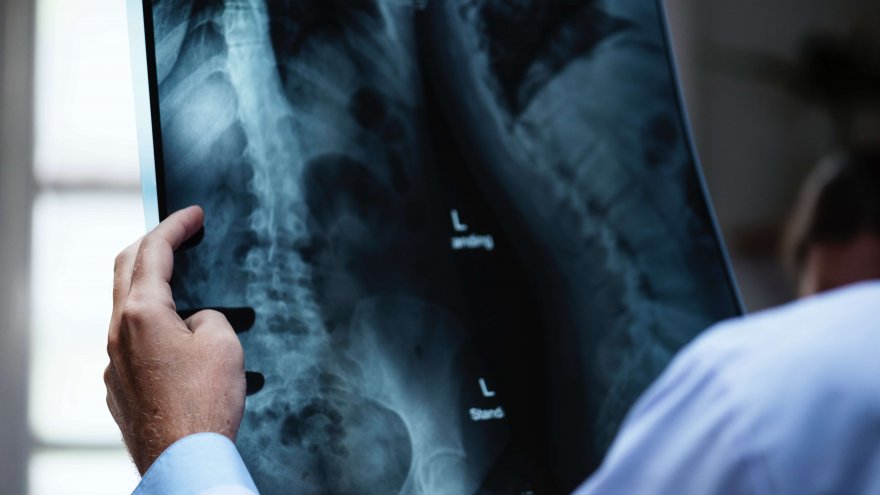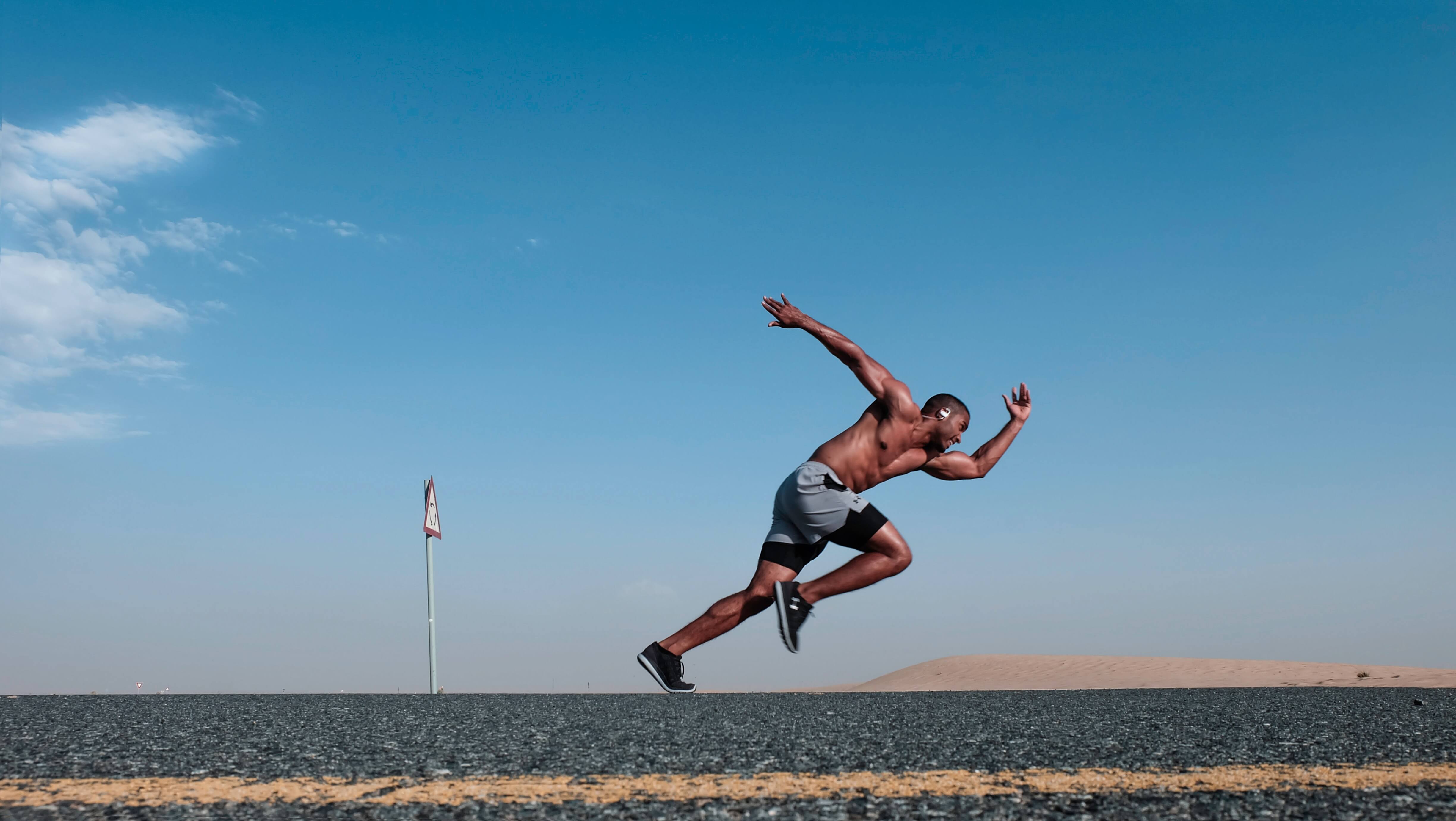What Your Gut Says About Your Running Posture

New runners venturing into long distance running may touch upon new experiences beyond reaching new mileages or aches and pains associated with prolonged forces on the body. Thought of as a somewhat taboo subject, or also casually called “potty talk” that you may have been taught as not appropriate for at the dinner table conversation, one may begin to be faced with gastrointestinal (GI) issues.
Experienced runners can laughably relate to the poop emoji or discussing amongst peers their nutrition and bathroom habits based on times or distances of their runs, or to put it plainly when having the “runs”. In fact, Sarah Marie Design Studio has this popular mug that comically depicts the steps before a morning run. It is inevitable that running and its effects on internal organs has some correlation. Whether running and GI issues go hand in hand or additional factors play into the mix like age, genetics, food, gravity or intensity of workouts, learning about GI issues can ultimately tell you a lot about your running posture.
There is some good news: corrective exercises can be performed to help assist in normalizing these issues. We may be able to beat our gut to the punchline!

What are some common gut problems runners experience:
It is said that 60% of runners experience intestinal distress [1]. Not only is this disruptive for training and competition but can also bring on unnecessary anxiety. Here are some examples of GI problems that runners may experience:
- The urgency to find a bathroom (AKA runner’s “trots” or runner’s gut)
- Pain in the stomach
- Bloating
- Gastroesophageal reflux disease (GERD) (AKA heartburn or acid reflux)
- Nausea and/or vomiting
- Diarrhea
- Constipation

What could these problems say about your posture:
As we age, it is not uncommon for some of us to have lost flexibility and strength that together help to maintain a proper posture in life and running. This can be attributed to a multitude of daily activities such as prolonged sitting for work, commuting, using a computer or smartphone and then pushing ourselves with a high impact run on a mal-aligned body. It makes sense there may be implications to our digestive system. Additionally, running can cause other internal system shifts including blood diversion from the digestive tract to the muscles causing the digestion system to act dysfunctionally, dehydration which slows blood flow, and stress and anxiety prior to races which can cause increased intestinal irritation.

If our primary focus with running is indeed that, running, sometimes a few of us neglect the strength training and flexibility components necessary to help keep our running form in the most efficient position, which can protect us against future injury or internal system dysfunction. If you are experiencing some of the above gut issues the next thing you may want to address is your posture. Here is what to look out for:
- Forward head and rounded shoulders
- The ears should line up over our shoulders with a natural curve at the neck and shoulders blades should be slightly retracted back. Day to day activities can protrude our head forward and shoulders to round forward, losing the natural curve of the spine and decreasing protection of the vagus nerve. This is important to note: the vagus nerve is the communication line between the brain and digestive system. It helps tell the digestive tract when and how to act. Putting stress on this nerve can cause loss of intestinal motility or proper enzymes and acid to release making for symptoms like gas, bloating, and constipation along with fatigue, dizziness, or migraines.
- Thoracic kyphosis (rounded upper back)
- Otherwise known as slouching, can cause loss of intra-abdominal space and put increased pressure on a vital muscle called the diaphragm. The diaphragm plays an important role in digestion; it helps move food and prevents stomach acid from rising. A weakened or compromised diaphragm can lead to acid reflux and constipation.
- Excessive lumbar lordosis (too much low back arch) combined with anterior pelvic tilt
- A low back and pelvis that has shifted out of alignment can change the anatomy of how your internal organs sit and act. The shift may result in an interrupted communication from the brain to gut, ultimately leading to sluggish gastrointestinal performance.
- Lower extremity muscle imbalances like weak glutes or tight hips or both
- A strong foundation starts at the core and pelvis. Mal-alignment or shifting from proper and good posture leads to postural dysfunction which can run disrupt the kinetic chain. So, not only could you experience external symptoms to the muscles and joints at the back, hip, knee or foot, but also disruption to internal structures.
How to naturally help some of these issues with exercise:
So, it is not to question which came first 1) The irritated gut or 2) Poor skeletal foundation, but rather answer what are the physical problems and how can we address them? Of course scheduling an appointment with your doctor or gastroenterologist can rule out more serious issues that may require medications or surgical procedures; however, a lot of less severe symptoms can be addressed by working with a physical therapist, chiropractor and/or nutritionist. Here are some non-invasive, conservative exercises that may help to both address your core and gut:
- Learn to breathe correctly
- This will ultimately get your diaphragm to function properly. Deep breaths that fill the belly for 5 seconds with a slight pause before exhaling for 5-8 seconds by pulling the belly button in towards the spine for 5 repetitions should do the trick!
- Mobilize the upper back. Reducing forward head and rounded shoulders position along with thoracic kyphosis will decrease the pressure on the diaphragm and vagus nerve. Here are some to try:
- Chin Tucks: Lay on the floor with a base of head resting on a rolled up hand towel. Press the head into the towel by creating a small double chin. Hold for 5 seconds and repeat 10 times.
- Pec stretch: Place both hands on each side of a door frame in a goal post position (elbows at 90 degrees at shoulder height while forearms and hand face up towards ceiling on each side of the frame). Take a small step into the door, feeling a pain-free stretch across the front of the chest. Hold for 30 seconds for 2-3 repetitions.
- Foam roll thoracic extension: Lay on the floor with the foam roller perpendicular to your spine starting at the top of your shoulder blades. Place hands behind the head to protect neck and keep knees bent with feet on the floor to adjust the hips up and down off floor as necessary as you hold the stretch on the spine for 20-30 seconds. Slowly roll an inch down the spine and hold. Repeat 3-4 times down the spine, just before the low back.
- Band row and shoulder external rotation: Grab a resistance band and put in on a secure hold at about waist-level. Grab each side of the band with hands and bend elbows to 90 degrees. Keeping the elbows close to the midline of the body, pull the band towards your hips while squeezing your shoulder blades together. At this point, hinge the elbow to the side of the body while externally rotating the hands away from each other, keeping the 90 degrees at the elbows. Return to neutral and repeat 1-3 sets of 10.
- Strengthen the core: The key to most everything! This will improve low back and pelvis position which will aid in helping to improve digestive tract function. Try these:
- Transversus Abdominus Activation: Lay on the floor with both knees bent and feet on the floor. Tighten your abdominals as if preparing for a punch to the stomach, but do not tilt your pelvis of hold your breath. Hold the contraction for 5 seconds and repeat 10 times.
- Pelvic Tilts: Lay on the floor with both knees bent and feet on the floor. Try to push your low back into the floor while tilting your pelvic bone towards the direction of your head. Hold for 5 seconds and repeat 10 times.
- Bridges: Lay on the floor with both knees bent and feet on the floor. Keep knees hip-width apart. Engage your abs and lift your buttocks off the floor, squeezing your glutes. Slowly lower back to the floor. Repeat for 10 repetitions.
- Sidelying Hip Abduction: Lay on your side with the bottom leg bent and top leg straight. Engage your abs and lift the top leg slightly higher than the level of the hip. Keep the foot parallel to the ground and the leg in line with the torso. Repeat for 1-3 sets of 10 reps. Repeat on the other leg.
- Stretch what’s tight: Improving glute and hip function, length, and efficiency will provide for a more stable foundation, thus improving overall running mechanics. Give these a whirl:
- Piriformis stretch: Lay on the floor with knees bent and feet on the floor. Place one foot on the top of the opposite knee, as if putting on your shoe. Using your hands to grab the back of the thigh of the leg with the foot still on the ground, pull that leg up with the stretched leg still on top. Hold for 30 seconds for 2-3 times. Repeat on the other side.
- Child’s pose: Begin on the floor on your knees, rest your bottom back towards your heels as your hands reach overhead towards the floor, letting the headrest down between the arms. Hold for 20-30 seconds for 2-3 reps.
Sources
- , Runners and Digestion: Tread Carefully, Advice Column
Latest Articles
 Is Running on a Treadmill Easier Than Running Outside?Runners have their own preferences, whether it is treadmill running, running outside on the road, or exploring trails. So...
Is Running on a Treadmill Easier Than Running Outside?Runners have their own preferences, whether it is treadmill running, running outside on the road, or exploring trails. So... Is It OK to Use Trail Running Shoes on the Road?While trail running shoes can be used on roads, especially in situations where a runner encounters mixed terrains or pref...
Is It OK to Use Trail Running Shoes on the Road?While trail running shoes can be used on roads, especially in situations where a runner encounters mixed terrains or pref... How to Fix Sore Quads After Running?Rest, ice, gentle stretching, and over-the-counter pain relievers can help soothe sore quads after running. Also, ensure ...
How to Fix Sore Quads After Running?Rest, ice, gentle stretching, and over-the-counter pain relievers can help soothe sore quads after running. Also, ensure ... 10 Fruits With The Most Electrolytes to Replace Sports DrinksThese fruits are high in electrolytes such as potassium, magnesium, and calcium, essential for hydration, muscle function...
10 Fruits With The Most Electrolytes to Replace Sports DrinksThese fruits are high in electrolytes such as potassium, magnesium, and calcium, essential for hydration, muscle function...

